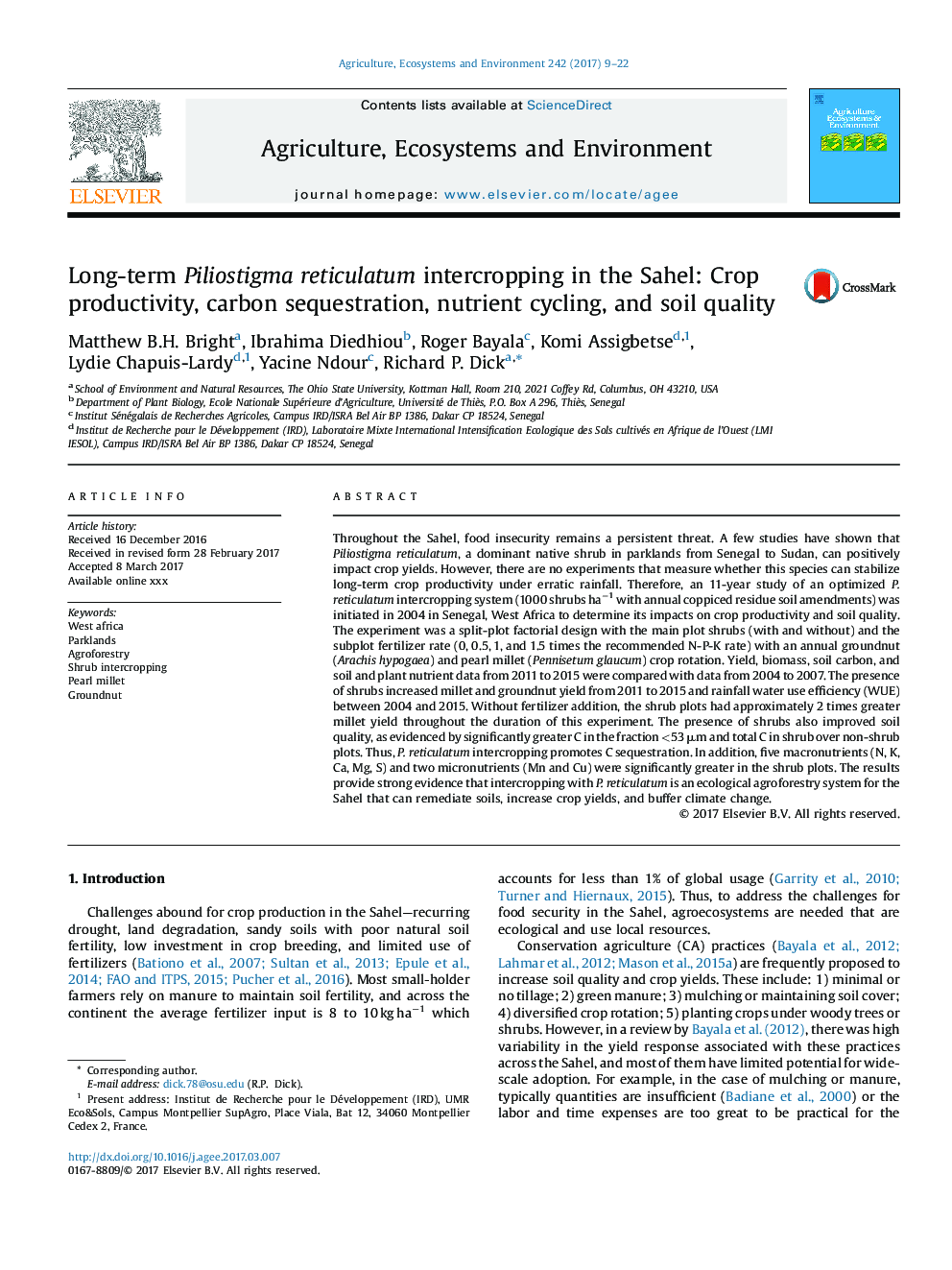| کد مقاله | کد نشریه | سال انتشار | مقاله انگلیسی | نسخه تمام متن |
|---|---|---|---|---|
| 5538135 | 1552010 | 2017 | 14 صفحه PDF | دانلود رایگان |
عنوان انگلیسی مقاله ISI
Long-term Piliostigma reticulatum intercropping in the Sahel: Crop productivity, carbon sequestration, nutrient cycling, and soil quality
دانلود مقاله + سفارش ترجمه
دانلود مقاله ISI انگلیسی
رایگان برای ایرانیان
کلمات کلیدی
موضوعات مرتبط
علوم زیستی و بیوفناوری
علوم کشاورزی و بیولوژیک
علوم زراعت و اصلاح نباتات
پیش نمایش صفحه اول مقاله

چکیده انگلیسی
Throughout the Sahel, food insecurity remains a persistent threat. A few studies have shown that Piliostigma reticulatum, a dominant native shrub in parklands from Senegal to Sudan, can positively impact crop yields. However, there are no experiments that measure whether this species can stabilize long-term crop productivity under erratic rainfall. Therefore, an 11-year study of an optimized P. reticulatum intercropping system (1000 shrubs haâ1 with annual coppiced residue soil amendments) was initiated in 2004 in Senegal, West Africa to determine its impacts on crop productivity and soil quality. The experiment was a split-plot factorial design with the main plot shrubs (with and without) and the subplot fertilizer rate (0, 0.5, 1, and 1.5 times the recommended N-P-K rate) with an annual groundnut (Arachis hypogaea) and pearl millet (Pennisetum glaucum) crop rotation. Yield, biomass, soil carbon, and soil and plant nutrient data from 2011 to 2015 were compared with data from 2004 to 2007. The presence of shrubs increased millet and groundnut yield from 2011 to 2015 and rainfall water use efficiency (WUE) between 2004 and 2015. Without fertilizer addition, the shrub plots had approximately 2 times greater millet yield throughout the duration of this experiment. The presence of shrubs also improved soil quality, as evidenced by significantly greater C in the fraction <53 μm and total C in shrub over non-shrub plots. Thus, P. reticulatum intercropping promotes C sequestration. In addition, five macronutrients (N, K, Ca, Mg, S) and two micronutrients (Mn and Cu) were significantly greater in the shrub plots. The results provide strong evidence that intercropping with P. reticulatum is an ecological agroforestry system for the Sahel that can remediate soils, increase crop yields, and buffer climate change.
ناشر
Database: Elsevier - ScienceDirect (ساینس دایرکت)
Journal: Agriculture, Ecosystems & Environment - Volume 242, 1 May 2017, Pages 9-22
Journal: Agriculture, Ecosystems & Environment - Volume 242, 1 May 2017, Pages 9-22
نویسندگان
Matthew B.H. Bright, Ibrahima Diedhiou, Roger Bayala, Komi Assigbetse, Lydie Chapuis-Lardy, Yacine Ndour, Richard P. Dick,